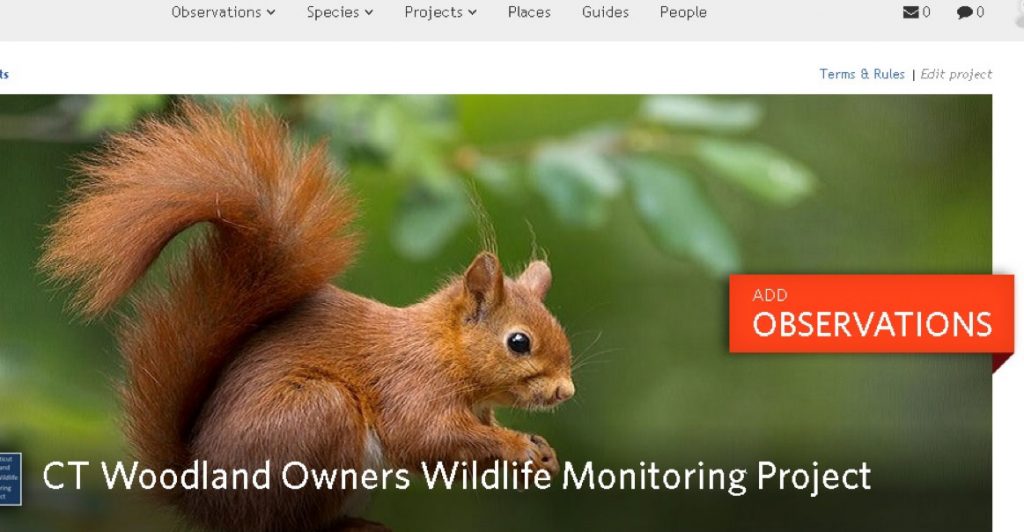Scott Matties was checking his mailbox one late winter afternoon when he saw three shadowy figures cut across Ridge Road heading for his property. The shadows did not move like dogs. Domestic cats are not that big, he thought. He dashed to the back of his house and froze: three young bobcats trotted across his snow-covered pond, moving west. Scott stood quietly and smiled.

He always felt close to nature and enjoyed watching wildlife. Scott and his wife, Anne Sicilian, bought a small piece of land in Chaplin furnished with a wildlife lover’s wish list: one pond, one vernal pool, a small aspen grove, mixed woods and a meadow. Through a local land trust, he heard about a new University of Connecticut pilot program asking woodland owners to monitor signs of wildlife activity on their land. Scott and his wife were eager to help and take on the task of becoming citizen scientists: nonprofessionals who assist researchers in developing new information – in this case, about ecological biodiversity on private lands.
Become an Important Player in Ecological Research
Not much is known about wildlife activity on private lands. State wildlife biologist Brian Hess describes private lands as “black boxes that may be high value but are inaccessible.” The University of Connecticut’s Extension Forestry program invites private woodland owners to bridge this gap. These citizen scientists record what they see and hear on their own land for one year. Considering that private landowners own most of the forests in the state, participants in this pilot program are leading the way in creating a dynamic source of research-quality information about forest health, species diversity, and invasive species that they can collect, explore, and share with researchers and other woodland owners across a broad geographic range.
Walk your property, Take notes, Make a difference
Participants are asked to record observations every two weeks, or twice a month, for a year, including taking pictures of unfamiliar signs, tracks and scat. There is no cost to join. Observations can be recorded on a wildlife activity log (provided to all participants) or on iNaturalist.org, an online data collection platform. A link to the project can be found here: http://bit.ly/1XJSxTQ.

After one year the program will be evaluated to determine its effectiveness, with the goal of creating a long-term study to monitor and track wildlife on private lands in Connecticut.
Doing Good for Wildlife and the Community
In the last month, Scott Matties and Anne Sicilian have made 78 observations simply by walking their land on weekends, like watching a great blue heron land on their pond or noticing fish egg nests along the edges. They’re excited that their property can support a bobcat family and that they have the opportunity to be citizen scientists! If you are interested in learning how you can contribute as a citizen scientist, please contact: Nancy Marek, doctoral candidate, College of Agriculture, Health, and Natural Resources, University of Connecticut, Storrs, CT, nancy.marek@uconn.edu, 203.745.9771. Thank you for your interest.
Dearest CLEAR blog readers – a new summer schedule will be coming out soon!